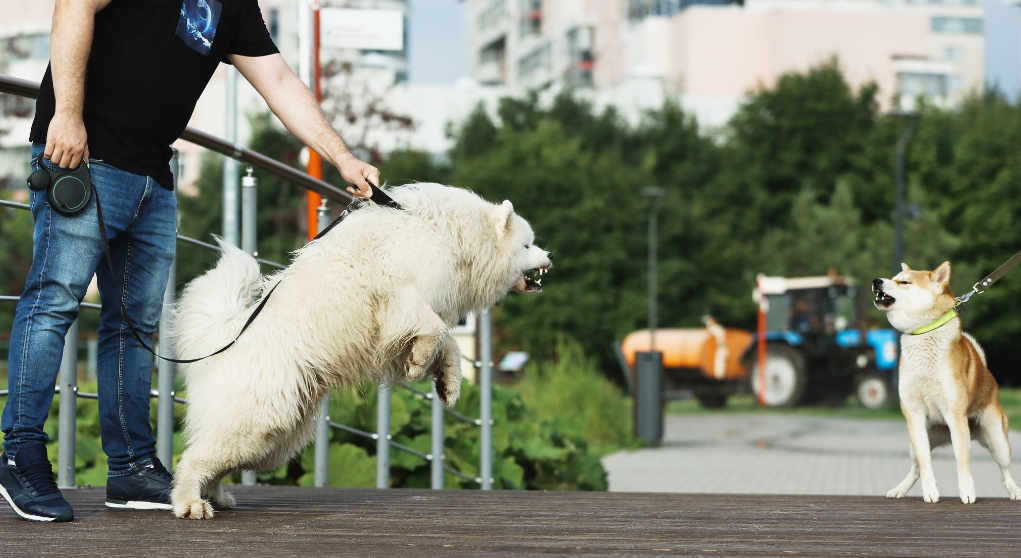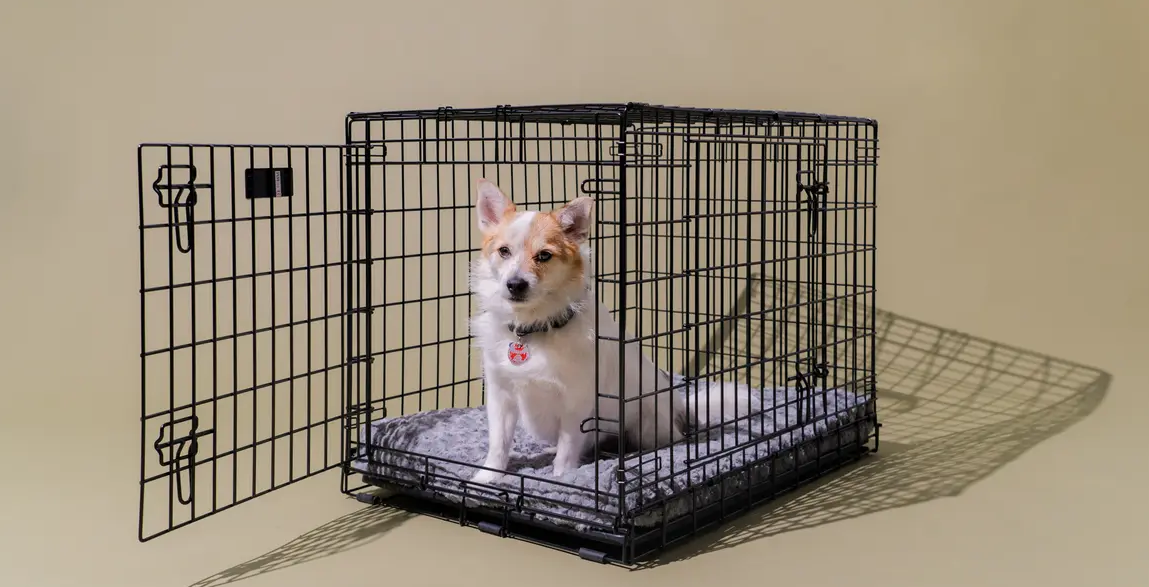Sharing your life with furry friends is a joy, and creating a safe and comfortable environment for them is paramount. Crates often play a crucial role in this, providing dogs with a den-like space to relax, sleep, and feel secure. But with multiple canine companions, the question arises: can you put two dog crates next to each other?
The answer, like many things in the dog world, depends on several factors. This guide delves into the pros and cons of side-by-side crate placement, offering insights to help you make the best decision for your furry family.
Can You Put Two Dog Crates Next to Each Other?
Putting two dog crates next to each other can be fine, but it depends on your dogs’ personalities. For well-bonded dogs, it can offer companionship and comfort. It can also be helpful for crate training puppies or anxious dogs if done gradually with close monitoring. However, if your dogs don’t get along well, it could lead to stress, conflict, and even injury.
Pros of Putting Two Dog Crates Next to Each Other
- Companionship and Comfort: For dogs who get along well, being close to their buddy can offer a sense of security and companionship, especially during crate training or when left alone.
- Mutual Learning: Puppies can learn good crate habits from older dogs placed nearby, fostering a sense of calm and routine.
- Reduced Stress: Seeing and interacting (safely) through the crate bars can ease anxiety for dogs who are prone to separation issues.
- Joint Training: If you’re crate training both dogs simultaneously, having them close can make the process more efficient and manageable.
- Space Optimization: Depending on your layout, placing crates side-by-side might be the most space-efficient arrangement.

Cons of Putting Two Dog Crates Next to Each Each Other
- Potential for Conflict: If your dogs don’t get along well, proximity can lead to fights, barking, and stress.
- Competition and Resource Guarding: Some dogs might exhibit resource guarding behavior, considering they crate their territory and feel threatened by another dog’s presence.
- Limited Personal Space: Even well-bonded dogs might need individual space to relax and de-stress.
- Difficulty Monitoring: Keeping an eye on two dogs in separate crates can be challenging, especially if they’re prone to barking or other disruptive behaviors.
Before Placing Crates Side-by-Side
- Assess Your Dogs’ Relationship: The most crucial step is understanding your dogs’ compatibility. Do they play well together? Do they exhibit any signs of aggression or resource guarding? If unsure, consult a professional dog trainer or behaviorist.
- Start Gradually: Even for well-bonded dogs, introduce the side-by-side arrangement gradually. Let them acclimate to the new setup with positive reinforcement and close supervision.
- Monitor Closely: During the initial phase and even after, pay close attention to your dogs’ behavior. Watch for signs of stress, anxiety, or aggression, and adjust the crate placement if needed.
- Provide Individual Space: Ensure each dog has access to blankets, toys, and other comforts within their crate to create a sense of individual space.

Alternatives to Side-by-Side Crating
- Separate Crates in the Same Room: This allows for companionship while providing individual space and preventing potential conflicts.
- Crates in Different Rooms: This might be suitable for dogs who need more alone time or require separate training approaches.
- Exercise Pens: If your dogs are calm and well-behaved, using separate exercise pens together can offer a larger shared space while still providing some boundaries.
Remember: Every dog is an individual, and the best crate placement depends on their specific needs and personalities. Always prioritize their safety and well-being, and don’t hesitate to consult a professional for personalized guidance.
Additional Tips for Putting Two Dog Crates Next to Each Other
- Use comfortable and appropriately sized crates for each dog.
- Ensure proper ventilation and temperature control in the crate area.
- Provide plenty of exercise and mental stimulation for both dogs.
- Make crate time positive with treats, toys, and praise.

By carefully considering your dogs’ needs and following these guidelines, you can create a safe and comfortable crate environment that fosters peace and harmony in your multi-dog household.
Do I Need 2 Crates for 2 Dogs?
Yes, it’s recommended to have separate crates for each of your two dogs. Here are a few reasons why:
- Safety and Comfort: Dogs need their own space where they feel secure. Having separate crates ensures that each dog has a safe and comfortable area to rest or retreat to when needed.
- Individual Needs: Dogs have different needs and personalities. Some may prefer more space, while others might feel cozier in a smaller crate. Having separate crates allows you to cater to each dog’s specific requirements.
- Training and Behavior: If you’re working on crate training or behavior modification, individual crates are essential. It helps prevent one dog from influencing the other’s behavior during training sessions.
- Health and Isolation: If one dog is sick or recovering from surgery, having separate crates prevents the spread of illness and allows for proper rest and isolation.
Remember to choose appropriately sized crates for your dogs, ensuring they have enough room to stand, turn around, and lie down comfortably.
Resources & References
- https://vcahospitals.com/know-your-pet/crate-training-your-dog
- https://www.thesprucepets.com/how-to-crate-train-puppy-2805067
Remember: This information is for educational purposes only and should not be considered a substitute for professional veterinary or dog training advice. Always consult with a qualified professional before making any changes to your dog’s care routine.
FAQs About Dog Crate Comforts
Is it okay to put two puppies from the same litter in the same crate?
While puppies from the same litter may initially find comfort in sharing a crate, it’s not recommended as a long-term solution. As they mature, they might develop individual needs and preferences, requiring separate spaces for relaxation and training. Additionally, resource-guarding behaviors can emerge, leading to potential conflicts.
My dogs get along great, can they share a crate permanently?
Even friendly dogs need their own space. Consider how you feel about sharing a bed every night! While side-by-side crates can offer companionship, individual crates provide essential downtime and prevent potential issues like resource guarding or competition.
My dogs bark at each other through the crates. What should I do?
This indicates stress or potential conflict. Separate the crates or use visual barriers like crate covers to block their view of each other. Gradually acclimate them to the side-by-side setup with positive reinforcement and close supervision. If barking persists, consult a dog trainer for personalized guidance.
Can I use exercise pens instead of separate crates?
Exercise pens can be a good alternative for well-behaved dogs who enjoy shared space. However, ensure each dog has access to designated areas for individual comfort and avoid overcrowding. Monitor their interactions closely and be prepared to separate them if needed.
My house is small, where can I place the crates?
Space optimization is important, but prioritize your dogs’ well-being. If placing crates side-by-side feels cramped, consider alternative arrangements like separate crates in different rooms. Ensure proper ventilation and temperature control wherever you place the crates.
My dog whines in their crate, even when placed with their partner. What’s wrong?
Whining could indicate anxiety, discomfort, or a need for crate training adjustments. Ensure the crate is the right size, provide comfy bedding, and offer positive reinforcement for crate time. If whining persists, consult a veterinarian or dog trainer to rule out medical issues and address potential anxieties.







